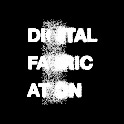Let’s print a pizza!

A fresh pizza margherita that takes just ten minutes from 3D printer to your plate? That is no longer a future scenario, but already bitter reality. Soon we will be saving ourselves the trip to the supermarket and ordering printer cartridges filled with dough and tomato sauce on the Net. However, not only pizza can be made with the help of a 3D printer, but also pasta. Do they look and taste better, though, and are they healthier? Fruit, vegetables and other foods are supposed to at least look more attractive, but that is all. This is achieved using a laser-cutter, which makes engravings of all kinds on the peel or surface. Attractive, or just pointless? Do we really want to have our food printed out or decorated using laser beams? Or is it simply the novelty we find attractive, the fact that it can be done: Let’s print a pizza! Why? Because it’s possible!
DigFab, a revolution in all areas?
It certainly looks like digital fabrication methods are gradually encroaching on almost all areas of our lives. In medicine, printing organs is no longer pie in the sky. In archaeology the imitation of originals that were thought lost is nothing unusual any more, while printing complicated special parts has since become cost-effective in industry. As a result in the slipstream of impressive products created using digital fabrication all manner of strange things are popping up, too. In line with the motto: If they can do it, so can we! And so we are printing a wide variety of things from all sorts of conceivable material. Even jewelry of gold. Does anyone give a damn whether the goldsmith might have done a better job? In fact, you no longer need specialists. Quality, craftsmanship are things of the past. We make it – because it’s possible
Our fascination for all the new manufacturing methods and the virtually unlimited range of applications that they promise have blinded us to waste products and pointless applications. All at once we view simple items as if they were technological marvels. And suddenly everyday items with little aesthetic appeal seem attractive. We suddenly believe the plastic egg-cup with its dubious design idiom, one that would never ever have found its way into our kitchen before the age of digital tinkering, is something special, merely because the ugly item was made using a 3D printer. And because we believe in technical progress we are proud of the most unimaginative and banal coffee beaker holders, towel rails and vases. Not because we thought them out ourselves, or put them together with our own hands, or saved a long time for them, but because we have downloaded a set of data from the Internet and inputted it into our home printer which cost 2,000 euros, or rushed into one of the many 3D copy shops that are cropping up around town, to transform data into things. The fact that we are making another copy of an object that is often badly designed, or has a dubious or non-existent function does not seem to dampen our enthusiasm. Do we simply want to participate in a manufacturing method that is allegedly changing the world? Or do we really believe it’s magic?
A conglomeration of useless things
And people are making it easy for us to believe we could take part in big changes. With Thingiverse, 3D printer maker MakerBot has set itself the goal of permitting everyone – regardless of whether they have any expertise or experience – to be able to quickly and simply print out things at home. Specifically, in the “Thingiverse Design Community” you can discover, share or make 3D-printable things. A glance at this “open platform” reveals: There is an enormous selection of superfluous and useless objects. It is difficult deciding between an egg cup with duck’s feet, an uncomfortable-looking bikini and a laughing boar’s head. So do we then leave the website disappointed? No way. On the contrary: Finally, we have a printer at home that wants to be used. And if we do not happen to be design students, who can put these devices to sensible use to create their models, we at least want to create something nice for our living rooms.
The art of three-dimensional photography
The current manufacturing methods do not even stop at art. For example, artist Karin Sander collaborated with various printer makers to develop techniques that allow ever more precise 3D replicas of people to be fashioned. The true-to-life models on a 1:8 scale that she calls “3D photographs” – are exhibited worldwide. Where art reflects the self-image of people many manufacturers sense an opportunity for exploiting our narcissism. It means that instead of having simple photos, it is now possible to have 3D versions of oneself and one’s loved ones delivered to the doorstep. Which brings us round full circle. Not only do we eat digitally produced or altered foods, we are ourselves transformed into a cheap 3D copy. And end up as ornaments in a display cabinet.



